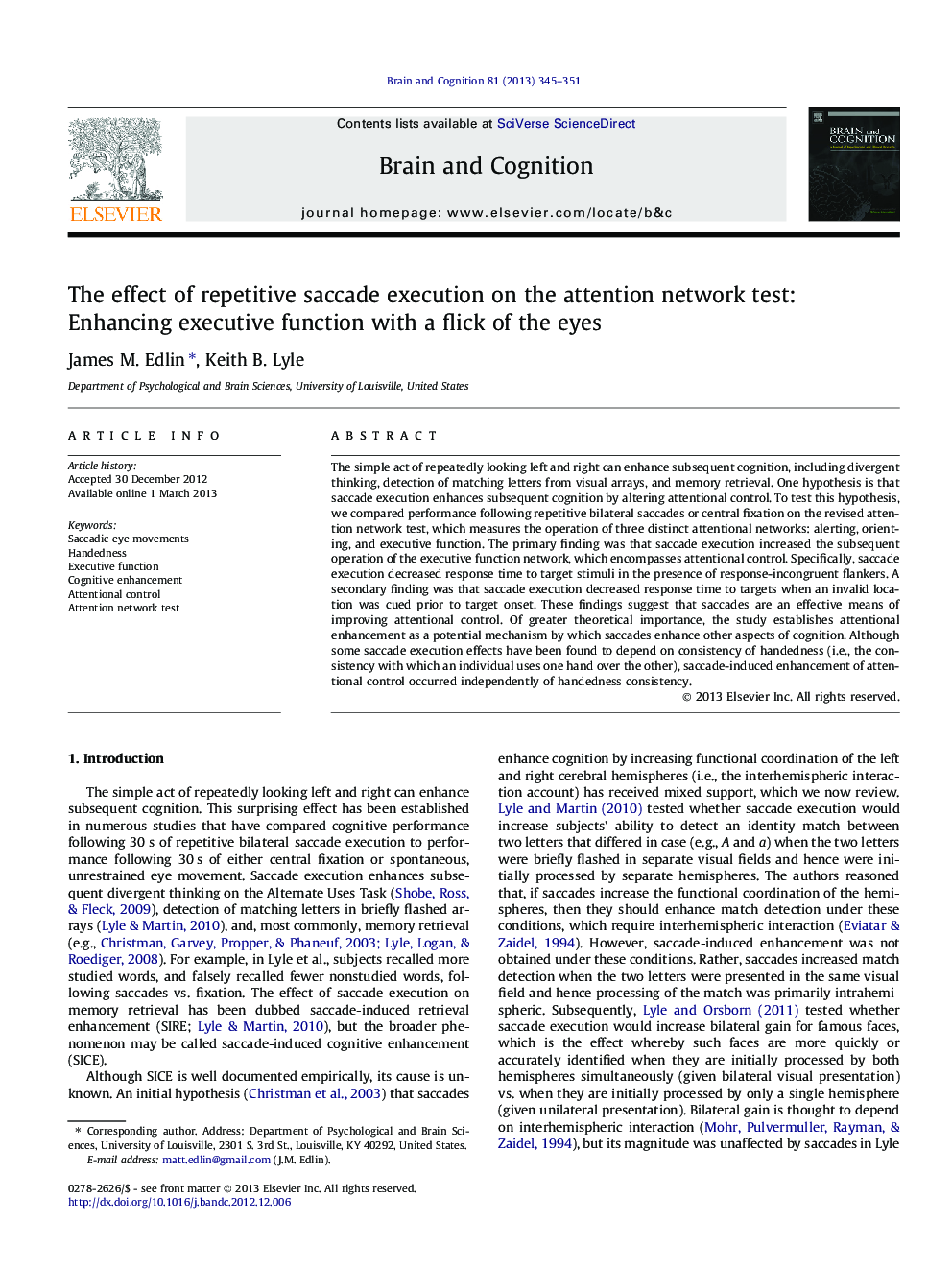| Article ID | Journal | Published Year | Pages | File Type |
|---|---|---|---|---|
| 924030 | Brain and Cognition | 2013 | 7 Pages |
The simple act of repeatedly looking left and right can enhance subsequent cognition, including divergent thinking, detection of matching letters from visual arrays, and memory retrieval. One hypothesis is that saccade execution enhances subsequent cognition by altering attentional control. To test this hypothesis, we compared performance following repetitive bilateral saccades or central fixation on the revised attention network test, which measures the operation of three distinct attentional networks: alerting, orienting, and executive function. The primary finding was that saccade execution increased the subsequent operation of the executive function network, which encompasses attentional control. Specifically, saccade execution decreased response time to target stimuli in the presence of response-incongruent flankers. A secondary finding was that saccade execution decreased response time to targets when an invalid location was cued prior to target onset. These findings suggest that saccades are an effective means of improving attentional control. Of greater theoretical importance, the study establishes attentional enhancement as a potential mechanism by which saccades enhance other aspects of cognition. Although some saccade execution effects have been found to depend on consistency of handedness (i.e., the consistency with which an individual uses one hand over the other), saccade-induced enhancement of attentional control occurred independently of handedness consistency.
► We compared performance of the attentional networks following saccades or fixation. ► Saccades enhance performance of the executive function network. ► Enhancement is due to decreases in RT on trials with incongruent flankers. ► Saccades also decrease RT on trials with invalid spatial cues. ► Enhancement does not depend on consistency of handedness.
